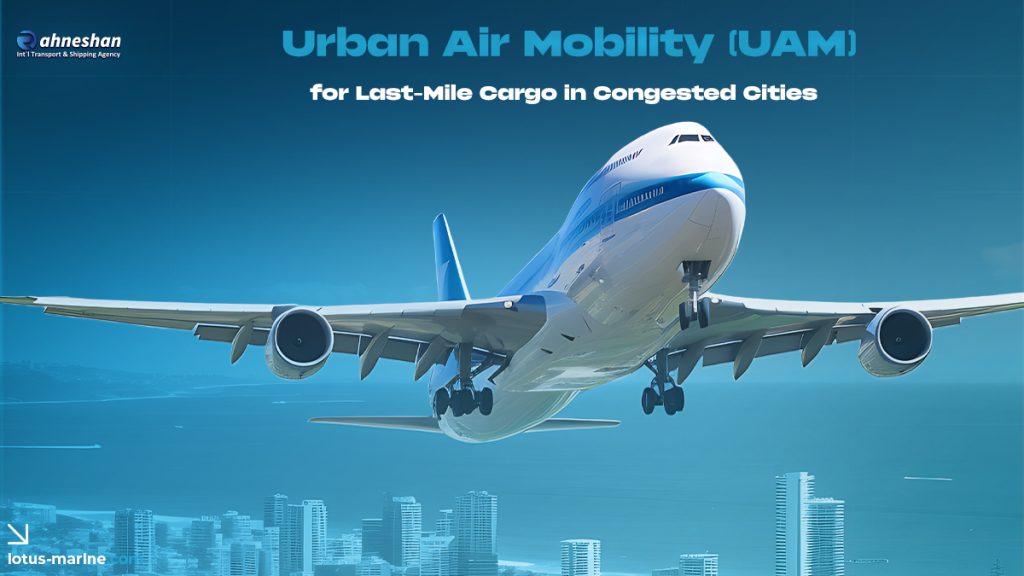Introduction
With rapid urbanization and growing e-commerce demand, last-mile delivery in congested cities has become one of logistics’ biggest challenges. Traditional ground transport—limited by traffic, emissions, and delivery speed—is struggling to keep up. Enter Urban Air Mobility (UAM): a next-generation logistics solution that uses electric vertical take-off and landing (eVTOL) aircraft and autonomous drones to move goods above city streets. In 2025, UAM is emerging as a viable, sustainable answer to the last-mile delivery crisis.
What Is Urban Air Mobility for Cargo?
Urban Air Mobility refers to the use of airborne vehicles—both manned and unmanned—to transport cargo across short urban distances. Unlike traditional drones, cargo UAM vehicles are designed for heavier payloads, automated routing, and integration into city logistics networks.
Key UAM Cargo Platforms
-
eVTOL aircraft for medium-range intra-city delivery
-
Autonomous drones for micro-deliveries and emergency logistics
-
Skyport hubs connecting warehouses, fulfillment centers, and city rooftops
Why UAM Matters in Congested Cities
1. Traffic Bypass
UAM eliminates dependency on ground infrastructure, avoiding urban congestion entirely.
2. Faster Delivery
Same-hour delivery becomes achievable, especially for urgent or high-value shipments.
3. Lower Emissions
Electric-powered UAM fleets align with ESG and Net Zero city goals.
4. Reduced Noise Pollution
New-generation eVTOLs operate far more quietly than traditional helicopters.
5. Supply Chain Resilience
UAM supports uninterrupted delivery even during road closures, strikes, or natural disasters.
Technology Enablers
-
AI-Powered Route Planning: Dynamic flight paths adjusted for weather, airspace restrictions, and delivery priorities.
-
5G & IoT Connectivity: Enables real-time tracking, collision avoidance, and air traffic coordination.
-
Autonomous Fleet Management: AI monitors performance, schedules maintenance, and allocates vehicles efficiently.
-
Urban Skyports: Compact, modular landing pads designed for vertical cargo movement.
Challenges in UAM Cargo Adoption
-
Airspace Regulation: Coordinating with civil aviation authorities to manage low-altitude air traffic safely.
-
Infrastructure Development: Need for widespread skyports and charging stations.
-
Payload Limitations: Most current UAM systems can carry only 50–300 kg per trip.
-
Public Acceptance: Safety, privacy, and noise concerns must be addressed.
Global UAM Pilot Projects in 2025
-
Singapore: Trialing UAM cargo corridors for port-to-warehouse transfers.
-
South Korea: Developing drone highways between logistics hubs in Seoul.
-
Germany: Testing eVTOL-based deliveries for automotive parts.
-
UAE: Integrating UAM systems into Dubai’s smart logistics framework.
Future Outlook
By 2030, urban air mobility could redefine the concept of “last-mile delivery.” As technology scales, hybrid models—combining ground EV fleets and aerial UAM systems—will dominate city logistics. With government support, integrated skyport networks, and AI traffic management, UAM may soon become as common as urban delivery vans are today.
Conclusion
Urban Air Mobility is revolutionizing last-mile cargo delivery by moving freight into the skies. Combining sustainability, speed, and smart infrastructure, UAM provides a practical solution for congested urban centers worldwide. As technology, regulation, and public perception align, the sky will truly become the next logistics highway.
Frequently Asked Questions
1. What is Urban Air Mobility (UAM)?
It’s the use of air vehicles—like drones and eVTOLs—for urban transportation of people or cargo.
2. How does UAM improve last-mile logistics?
It bypasses ground traffic, reduces delivery time, and minimizes emissions.
3. Which cities are leading in UAM cargo deployment?
Singapore, Dubai, Seoul, and several European smart cities are leading pilot programs.
4. What are the main barriers to adoption?
Airspace regulation, infrastructure costs, and limited payload capacities.
5. Will UAM replace traditional delivery vehicles?
Not entirely—it will complement ground fleets, especially for time-sensitive and high-value shipments.







